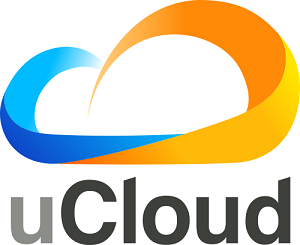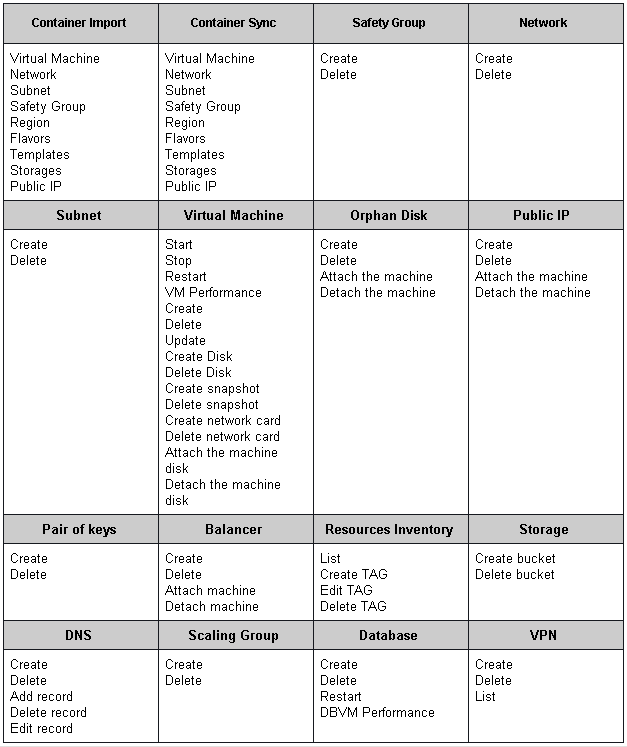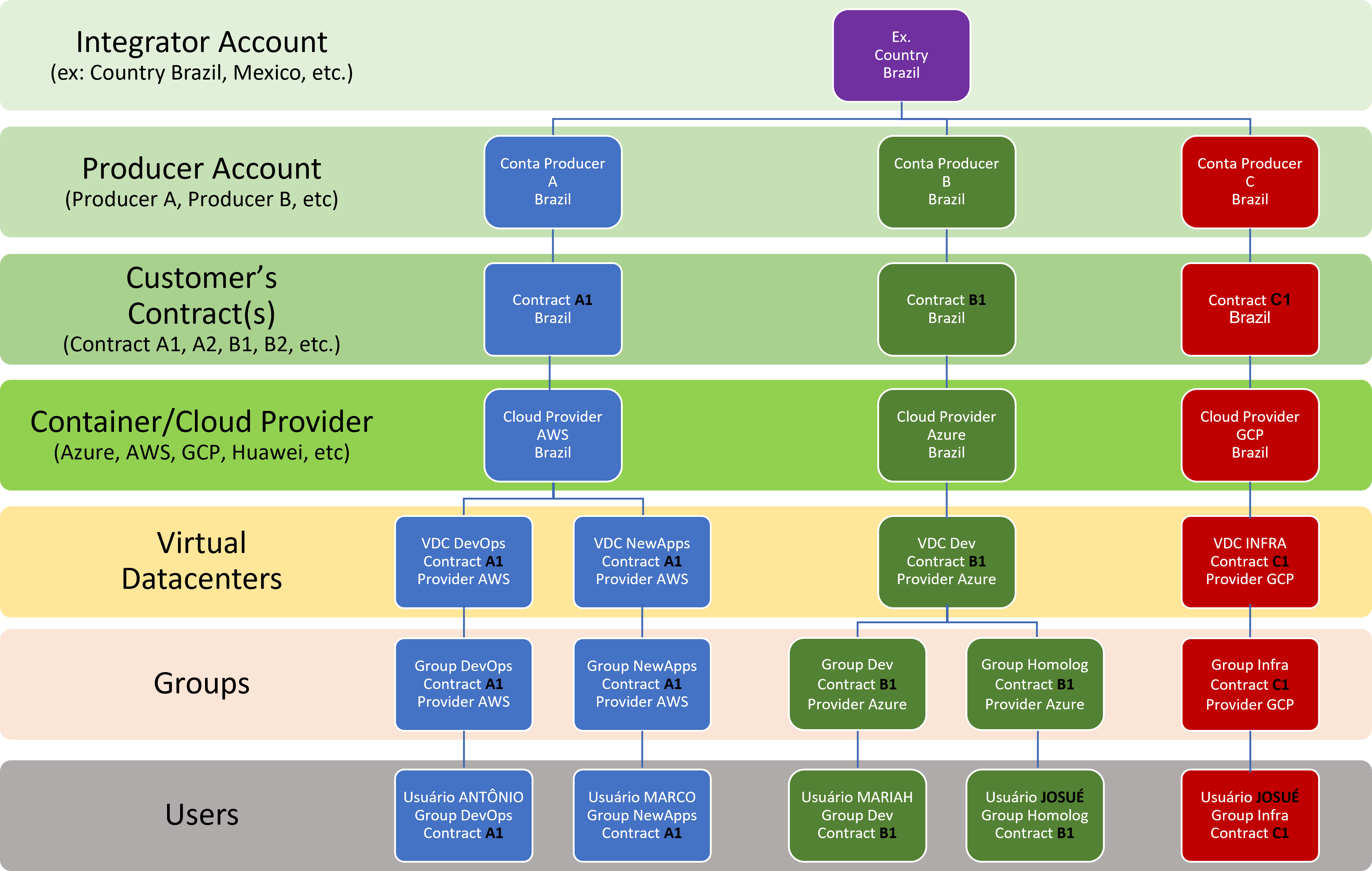
2022.05
Consolidated: uCloud
Year 2022 - Period: May
Version: Update tag 5.2-b35
Introduction
In general, the IT infrastructure professional uses several consoles to provision computational resources, whether it is within the organization (private data center) or in a cloud provider. The computation in cloud is an evolution of information technology’s services and products on demand, called Computing Utility by Brantner et.al., 2008, to which the objective is to provide basic components such as: storage, processing and network bandwidth through specialized providers with a low cost per unit used. In contemporaneity, keeping up to date and prepared, in all the consoles is a challenge for this professional.
In an attempt to increase productivity and reduce the degree of dependence on these consoles, the market developed the concept of Infrastructure as a Code (Iaac). This concept only addresses the moment of initial provisioning (even with the use of scripts for installing patterns and softwares), there may be demands in which the IT professional must connect to the environment console, to perform some intervention in the infrastructure that is not possible through the IaaC concept. Being connected and alternate between the several cloud consoles demands a great specialization and knowledge from the IT professional.
The CSB (Cloud Service Broker) platforms were developed to occupy this niche and concentrate the inventory of computational resources from public and private clouds in a single interface that transfers control and operation of these multi-cloud resources to the user.
As mentioned, the market itself developed provisioning computacional resources methodologies through automated scripts (also called playbooks). Among these formats there are some that the world market has adopted more widely, such as Ansible, Terraform and Puppet.
The market has also created the demand for programming the execution of a several scripts sequence within a controlled and linked flux, so that an error in one of these scripts can interrupt the entire flow to avoid provisioning an infrastructure without its due quality.
Alert to the constant evolution in the Brazilian market and to our users demands, the Ustore introduces new implementation, corrections, integrations, updates in the functionality menu and its detailed description.
In addition to expanding the existing concept, this release notes details the updates occurred in the uCloud Platform, included in (tag.5.2-b35) attending to the several market demands of our clients, capable of transforming the public and private clouds management form with the uCloud platform.
New implementations
The news presented below were categorized into:
Corrective actions to adapt to changes occurred in the cloud providers;
The integrations executed in the portal;
Global updates in some functionalities menu from the portal.
In addition to the most robust innovations, listed in three themes. These new implementations will be described, in detail, through this document.
Account
Virtual TAGs
Oracle Cloud Infrastructure
Corrective Actions
In this release notes are listed all the corrective actions implemented, motivated by certain situations reported to our development team.
Amazon Web Services (AWS)
Regarding the interaction with the AWS public cloud service provider, there have been no alterations, fixes, new implementations or new functionality.
Microsoft Azure (Azure)
Regarding the interaction with the Microsoft Azure public cloud service provider, we can list the following alterations:
Adaptation of the Scaling Group to suit the update in the response model sent by the cloud. After this implementation, by creating a Scaling Group the process automatically creates an Instance Group, to be managed by this Scaling Group.
Adjustment to the model for handling the deletion of disks associated with Virtual Machines. This improvement was necessary because there was a change in the way the deletion is done in the cloud. Adaptation in the PMC to accompany this improvement.
Google Cloud Platform (GCP)
Regarding the interaction with the Google Cloud Platform (GCP) public cloud service provider, we can list the following alterations:
New execution in the Listeners and Members of a Balancer functioning.
Addition to the support by creating the Balancer using the HTTP protocol.
UDP (User Datagram Protocol) rule application to Security Groups.
New region inclusion, such as:
Columbus, Ohio, North America: us-east-5
Dallas, Texas, North America: us-south1
Madrid, Spain, Europe: europe-southwest1
Milan, Italy, Europe: europe-west8
Paris, France, Europe : europe-west-9
Huawei Cloud (Huawei)
Regarding the interaction with the Huawei Cloud public cloud service provider, there was no alteration, correction, nem implementation or new functionality.
IBM Cloud
Regarding the interaction with the IBM Cloud public cloud service provider we can list the following alteration:
Implementation of the business rule to disable editing the single NIC (Network Interface Cloud) of the Virtual Machine.
VMware 6.5 or superior (vCenter/vSphere)
Regarding the integration with the VMware 6.5 (or superior) private cloud hypervisor, we can list the following alterations:
Update on how to create a subnet to suit the new uSDN version.
Anomalous behavior corrected, multiple connections opened at the same time.
VMware vCloud
Regarding the interaction with the VMware 6.5 (or superior) private cloud hypervisor, we can list the following alterations:
Container importation correction.
API update to version 35.0.
Integrations
There was one implementation and improvement of communication with the monitoring agent (Mangue/uCloud)
Updates
Below is the update list that have been implemented on the uCloud Platform:
Expansion of the coverage of translations of portal elements or items, both into Spanish and English.
Update price table for Flavors.
Review of communication in portal exception messages, focus on user interaction with content and user experience.
Description of New Implementations
Below is described the technical and operational characteristics of three new implementations that were applied to this new uCloud Platform version/release. In this chapter are listed the new implementations and they will be clarified in the course of this document.
Account
Virtual TAGs
Oracle Cloud Infrastructure (OCI) - Operation functionalities only.
Account Description
The uCloud Platform can be implanted in two different ways:
A. Dedicated installation (on-premises)
For the dedicated installation scenario (on-premises) the Account functionality may not be applied, probably this installation only belongs to a single company, and this company will not share the uCloud Platform between other organizations. Still in this scenario, we will assume that the installation of the uCloud Platform will only be used in their own cloud(s) (public and/or private).
B. Installation shared as a service (SaaS - Software as a service)
The Account functionality was designed for the shared installation (SaaS) scenario, where the company (we will call it organization) aims to provide a Cloud Service Broker service with the uCloud Platform between its various operations (regional or international) and for its several final-customers.
The scenario uCloud Platform SaaS described above is ideal to the connectivity/communication service provider (organization) which can share the uCloud Platform among its regional operations and, also, between its final customers that wish the benefits of an operation, financial governance and billing.
This functionality helps the management and the organization environment control, in a centralized manner, by its the business rule makes it possible to create the “Accounts” and allocate the Contracts, the Groups and its Users (elements belonging to the Switch Roles” universe).
It makes it possible to organize and share the resources between the created “Accounts”, besides applying the service control policies to contracts, groups and users, optimizing the governance upgrade. This new model inserts the layer “Account” in the Administration menu which represents a new process to promote the alignment around the “Accounts” functionality and, that way, to conduct the organizations to obtain a greater control.
This functionality “Accounts” has the objective to provide to the organization the possibility of segmenting customers by size (Virtual Machines), by revenue volume (financial costs), makes it possible to understand the development by “Account” and filter its history by line of business.
To exemplify a way to charge for the “service offering” of Centralized Cloud Management by the uCloud Platform, we will use the example of “consumption levels” of computing infrastructure based on the number of Virtual Machines Managed by the uCloud Platform, called «Tier». The Tiers represent the existing billing model in the “Accounts” functionality, the business rule created establishes the accounting of the resources obtained and generated by a given account.
In the portal, the Tiers are categorized in levels from A to J (1 to 10) and calculated based on the rules established using two parameters: - certain numbers of Virtual Machines generates a determined maximum cost (number of machines versus cost/value). In case of a created account, upon reaching one of the parameters, the application immediately scales to the next level. The Tiers level follows below:
Tier |
A |
B |
C |
D |
E |
F |
G |
H |
I |
J |
|---|---|---|---|---|---|---|---|---|---|---|
Quantity of
Virtual Machines
|
≤ 20
|
≤ 30
|
≤ 50
|
≤ 75
|
≤ 100
|
≤ 150
|
≤ 200
|
≤ 250
|
≤ 300
|
≤ 500
|
Monthly amount |
$1.500 |
$3.000 |
$4.000 |
$6.000 |
$8.000 |
$16.000 |
$24.000 |
$32.000 |
$40.000 |
$64.000 |
Atenção
All quantities and values presented above are merely illustrative, serving only as examples.
Example Use Cases:
Galaxy Company Contract (qty. VMs 20):
Just for the purpose of exemplifying a scenario, we will describe the offer of services to use the uCloud Platform in the SaaS (Software as Service) modality to the Galaxy company, and in its “Account” there are 20 Virtual Machines (active and managed by uCloud Platform), it fits in the Tier level “A” - the monthly amount to be invested by the Galaxy Company will be R$1,500 reais or dollars (depends on which country the company will be established). An important observation, in case the account uses only 18 machines, it will still be classified in Tier “A”.
Segmentation by Accounts
There are two classes of “Accounts”, they are categorized into two types, the accounts in the Integrator type and the Producer type, detailed below:
A. Integrator Account This account is responsible for creating the profiles of the integrator and producer accounts, when creating these profiles, it feeds the tiers and the packages, in addition to establishing, the producer account its usage rule.
To exemplify:
It works as a kind of cluster, agglomerating and categorizing other corporations.
For example:
In case of a multinational corporation using an Integrator account, it can be considered an “Integrator Account” for the countries that comprise it: Mexico, Brazil, Chile and Colombia.
The corporation is responsible for creating other accounts and escalating the other users` permissions. Its particularity is the list of all the producer accounts, the list of all associated contracts and can apply business rules.
B. Producer Account This producer account belongs to the organization which consumes the resource, represents a minor clustering unit and can operate the entire portal.
For example:
Resuming the example above, this multinational corporation creates the “producer accounts” for the organizations that belong to it within a certain country listed above, in Brazil, the organization has companies A and B which administers the contracts a1 and b1.
Below is an illustration that represents the complete concept of the scope of the «Account» functionality implemented in the uCloud Platform. The names and denominations used are merely illustrative.
The Producer Accounts can have one or more administrators (in this level the profile of this user is one of System Administrator - ex.: root), the contracts stop being created when the corporate resource ends, the visualization profiles and permission obey the business rule applied by the integrator account.
The strategy of using the “Accounts” functionality provides a better perception of value at the level of hierarchy that wants to organize the data within the context of organization, by facilitating its transit at the operational, managerial and executive levels.
With the creation of this functionality, the account administrator can manage the visualization and the permission of each user within each group, contained in a given contract. In this way, the access is denied by default, being granted only when the permissions specify “allow”.
Additionally, the functionality “Accounts” makes it possible to use the control policies that establish the protection barrier of permission and visualization for users, depending on the characteristics of the type of user, group and contract to which it belongs.
By establishing these defaults of permission, access and resources visualization, it organizes and qualifies the privilege each user will have within the environment the public cloud providers in each contract/group/user belongs, creating that way, different and necessary permissions to create thorough controls in each account.
Oracle Cloud Infrastructure (OCI)
With the organizations needing to maintain a consistent performance, they tend to adopt the strategy of using multiple public cloud providers. To attend to this demand, the Ustore launches the new implementation “Oracle Cloud Infrastructure (OCI), integrating the OCI public cloud with the uCloud portal.
This new release of the uCloud Platform, provides only the OCI infrastructure operation functionalities, according to the list below.
From this release notes, our portal to give support to the cloud, available the resources and functionality of embitne Operation OCI listed next:

It should be noted that the current list of functionalities above is directly related to the availability of functionalities present in the current Software Development kit (SDK) published by Oracle, and was used by the Ustore DevOps team (May/2022) for integration with the Oracle Cloud Infrastructure.
The continuous development of both the DevOps team at Ustore, as well as the expansion of new functionalities present in other evolutions of the Oracle SDK, provides the evolution of releases and/or versions of the uCloud Platform, which will be listed in the future Release Notes of the uCloud Platform.
Nota
In the present moment of this Release note (May, 2022) the API and the SDK for the OCI still does not allow the complete support to the collect implementation and billing infrastructure calcule present in the OCI environment. We await the SDK and API Oracle Cloud Infrastructure evolution to implement the billing functionality for OCI.
This set of new functionalities implemented and described, contained in this document, generated the development of this new version (update tag.5.2-b35). Thus, Ustore reaffirms its constant commitment to evolving the platform and aligning it with the needs of the market and its customers.








